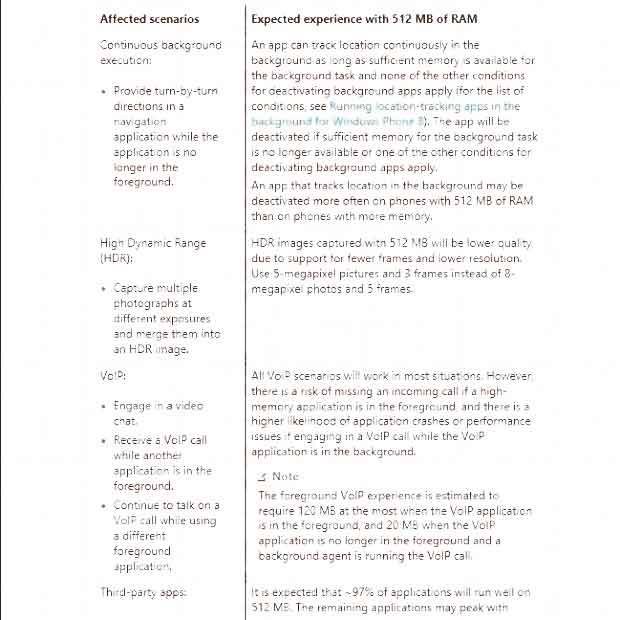Microsoft Windows 10 to run on devices with as little memory as 512MB
In an early February Tweet, Joe Belfiore announced plans for support of mobile devices with as little as 512MB of RAM:
Hey all: we ARE working on Win10 for 512MB, including 520. Our ambition is to make #Win10 available for these devices but features may vary
— joebelfiore (@joebelfiore) February 8, 2015
According to a recently leaked document, the team working on Windows 10 is making good on that promise, although it’s unclear whether the experience will be restricted to mobile devices or PCs as well. By the same token, the document does not explicitly exclude the possibility, as the core of Windows 10 is supposed to be able to run on virtually any device, including IoT’s.
This should be particularly good news for PC makers of lower-end consumer device. The ability to run Windows 10 on lower specs will allow for a broader range of consumer products, and cater to more consumers, which should create an upturn in PC sales.
The image below is a rendition of the document published on several sites, but stripped of watermarks for readability:

The origin of the document is unknown, and appears to be a truly “leaked” document with no official reference from Microsoft.
Transcript of the alleged internal Microsoft document:
Experience with 512MB of RAM
An app can track location continuously in the background as long as sufficient memory is available for the background task and none of the other conditions for deactivating background apps apply (for the list of conditions, see Running location-tracking apps in the background for Windows Phone 8). The app will be deactivated if sufficient memory for the background task in no longer available, or one of the other conditions for deactivating background apps apply.
An app tra tracks location in the background may be deactivated more often on phones with 512 MB of RAM than phones with more memory.
HDR images captured with 512 MB will be lower quality due to support for fewer frames and lower resolution. Use 5-megapixel pictures and 3 frames instead of 8-megapixel photos and 5 frames.
All VoIP scenarios will work in most situations. However there is a risk of missing an incoming call if a high-memory application is in the foreground and there is a higher likelihood of application crashes and performance issues if engaging in a VoIP call while the VoIP application is in the background.
Note:
The foreground VoIP experience is estimated to require 120 MB at the most when the VoIP application is in the foreground and 20 MB when the VoIP application is no longer in the foreground and a background agent is running the VoIP call.
It is expected that 97% of applications will run well on 512 MB. The remaining applications may peak with higher memory requirements in certain scenarios, resulting in slow performance while paging or terminating the applications.
Note:
Some important applications are in the top 5% of memory utilization, and Microsoft plans to work directly with the owners of those applications.
Fewer applications (0-2) will be put in the dormant state and included on the back stack. Users will see the “resuming...” screen more often while tombstoned applications are activated.
If a very memory-intensive application is running, start times for other applications may be significantly longer (5 seconds of longer) or they may fail to start.
websites will be available. when a background tab is unloaded, the page will be reloaded when the user returns to the tab.
More blank screens when scrolling very quickly because of a reduced tile cache size.
Very large webpages (currently ~1% of the top 1000 websites) will be slower or may cause Internet Explorer to close unexpectedly.